What is CNN
简单的卷积操作:
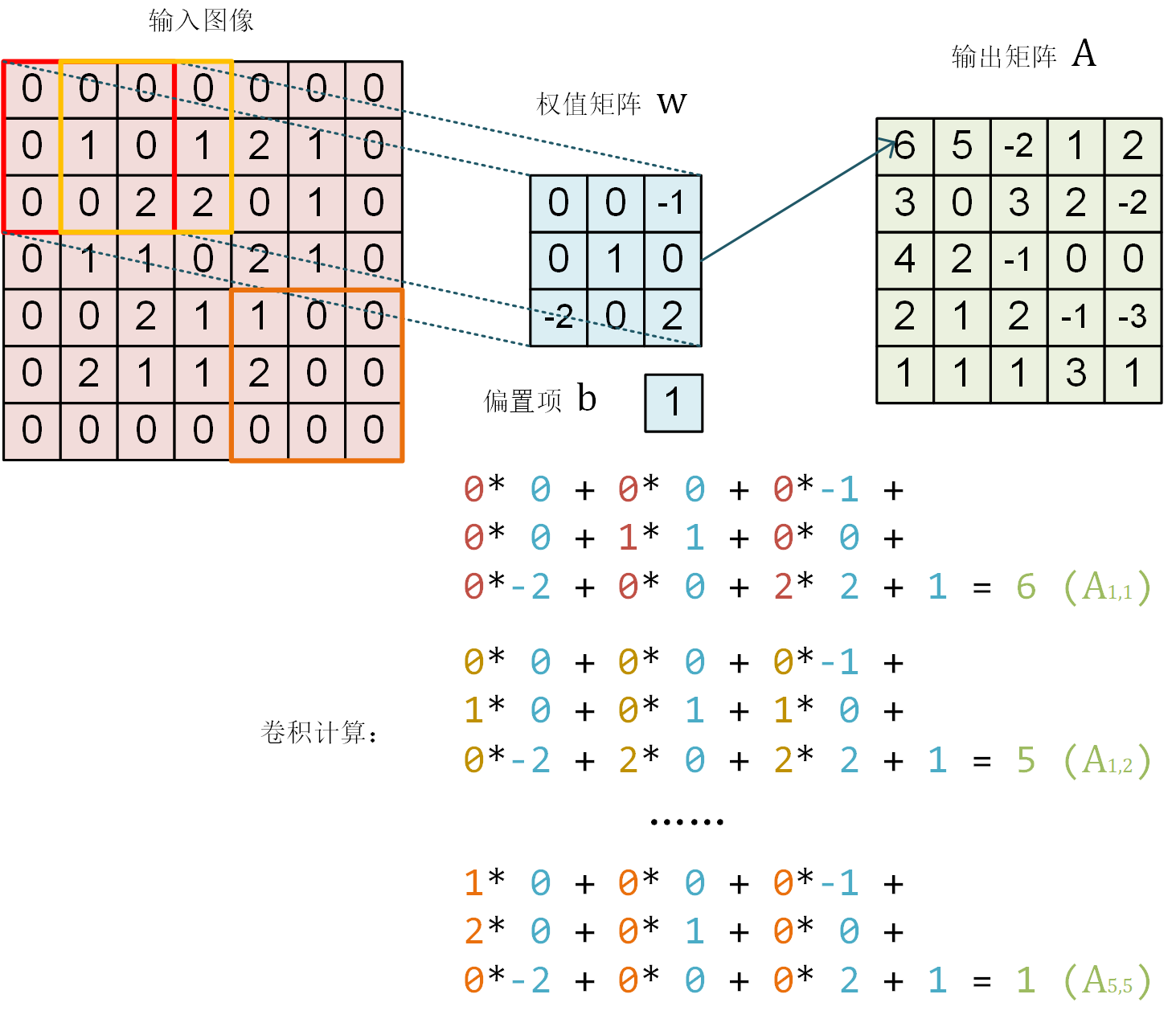
其他卷积操作详见:
Feature Maps
每一层输入x都是[b,h,w,c]shape大小的Feature maps,代表有b张图片,高宽是(h,w),c代表channel,通常情况下,是将(h,w)的抽象信息高度浓缩提取到c上表示,如:
(32,32,3 -> (1,1,128)
CNN
详见Code
- Weight sharing
- Sliding window
- Padding & stride
在tensorflow中,某一层CNN的weight和bias的存储格式是:
- Weights: [kernel_size, kernel_size, channels_of_last_layer, num_filters]
- Bias: [num_filters]
Operations
- Pooling/Downsmapling
- Max/Avg pooling
- Upsampling
- nearest
- bilinear
- Relu:将负的数据过滤掉
BatchNormalization
由于激活函数的存在梯度消失现象,最好将数据分布调整到靠近0的范围。
将每一层神经网络的输出数据分布调整到N(0,1)正态分布。
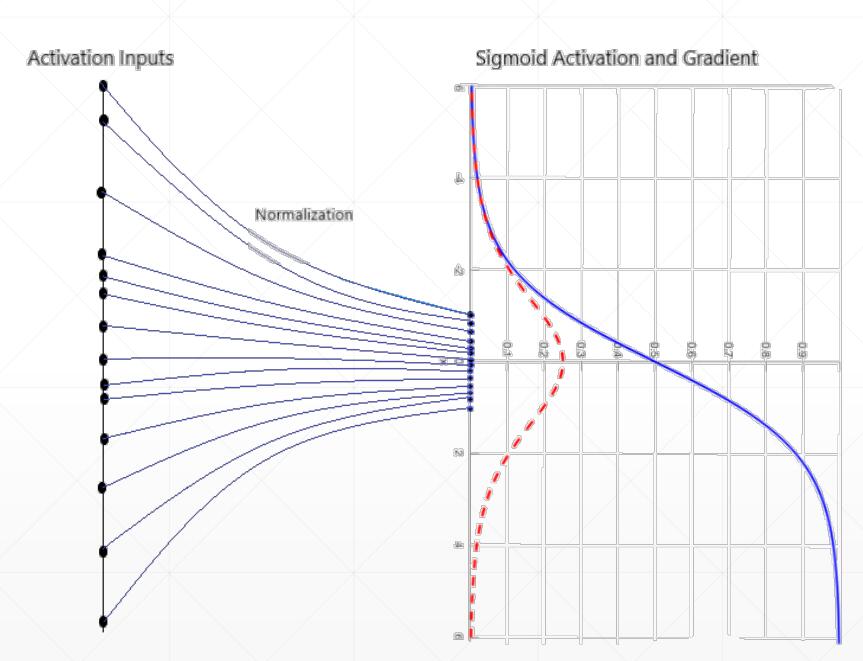
Feature Scaling
- Image Normalization
def normalize(x, mean, std):
# [b, h, w, c]
x = x - mean
x = x/ std
return x

- Batch Normalization
- dynamic mean/std
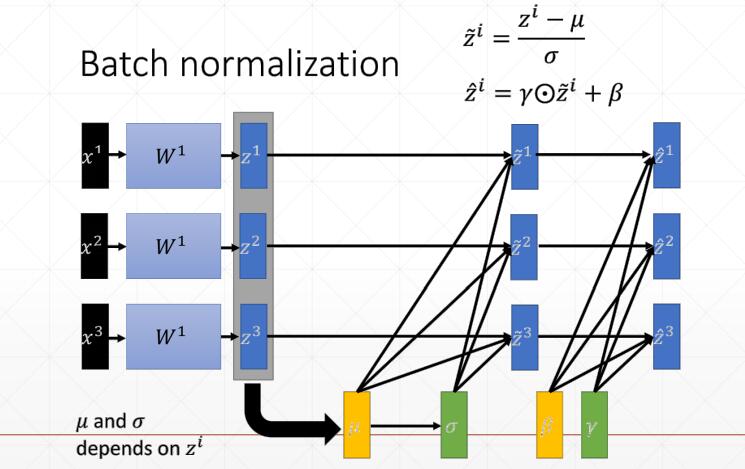
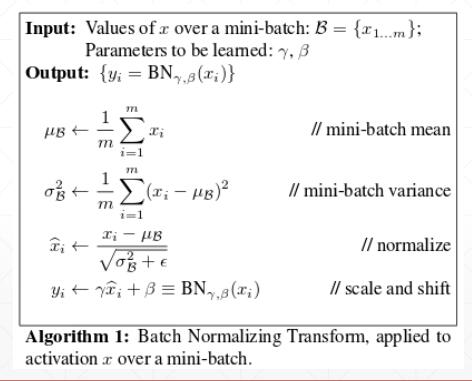
- net=layers.BatchNormalization()
- axis=-1
- center=True
- scale=True
- trainable=True
- net(x, training=None): 测试和训练和dropout一样,需要制定training参数
Advantages of BN
- Converge faster
- Better performance
- Robust
- Stable
- Larger learning rate
Architecture
- LeNet-5: 1980年代
- AlexNet: 2012
- VGG: 2014
- GoogleNet: 2014
- ResNet: 2015
- DenseNet
ResNet
The residual module:
- Introduce skip or shortcut connections
- Make it easy for network layers to represent the identity mapping
- For some reason, need to skip at least two layers
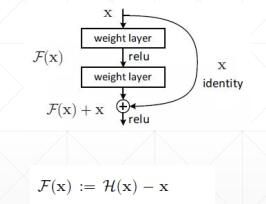
Out of Memory
- Decrease batch size
- Tune ResNet [2,2,2,2]
- Buy new NVIDIA GPU Card
使用Keras中预定义的经典卷积神经网络结构
tf.keras.applications中有一些预定义好的经典卷积神经网络结构,如 VGG16 、 VGG19 、 ResNet 、 MobileNet等。我们可以直接调用这些经典的卷积神经网络结构(甚至载入预训练的参数),而无需手动定义网络结构。
model = tf.keras.applications.MobileNetV2()
一些共同的常用参数如下:
- input_shape :输入张量的形状(不含第一维的 Batch),大多默认为
224 × 224 × 3。一般而言,模型对输入张量的大小有下限,长和宽至少为32 × 32或75 × 75; - include_top :在网络的最后是否包含全连接层,默认为
True; - weights :预训练权值,默认为 ‘imagenet’ ,即为当前模型载入在 ImageNet 数据集上预训练的权值。如需随机初始化变量可设为
None; - classes :分类数,默认为 1000。修改该参数需要 include_top 参数为
True且 weights 参数为None。
import os
import tensorflow as tf
import tensorflow_datasets as tfds
os.environ['TF_CPP_MIN_LOG_LEVEL'] = '2'
os.environ['CUDA_VISIBLE_DEVICES'] = '2'
num_batches = 1000
batch_size = 50
learning_rate = 1e-3
dataset = tfds.load('tf_flowers', split=tfds.Split.TRAIN, as_supervised=True)
dataset = dataset.map(lambda img, label: (tf.image.resize(img, [224, 224]) / 255., label)).shuffle(1024).batch(32)
model = tf.keras.applications.MobileNetV2(weights=None, classes=5)
optimizer = tf.keras.optimizers.Adam(learning_rate=learning_rate)
for images, labels in dataset:
with tf.GradientTape() as tape:
labels_pred = model(images)
loss = tf.keras.losses.sparse_categorical_crossentropy(y_true=labels, y_pred=labels_pred)
loss = tf.reduce_sum(loss)
print(f'loss: {loss.numpy()}')
grads = tape.gradient(loss, model.trainable_variables)
optimizer.apply_gradients(zip(grads, model.trainable_variables))
Reference
Note: Cover Picture
